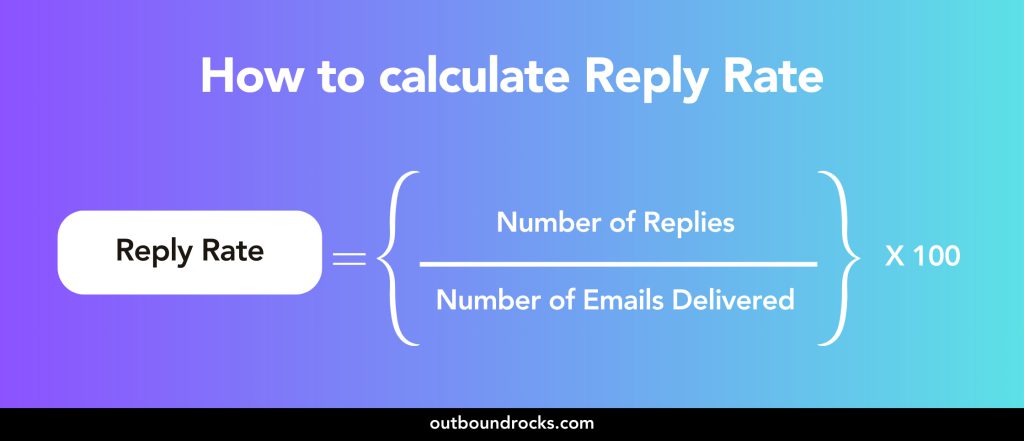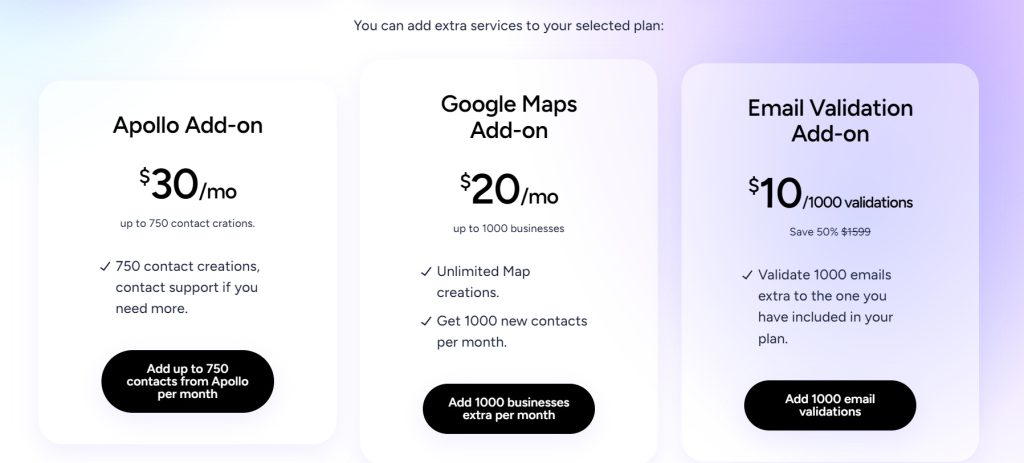Faced with a wall of silence in your inbox after sending a cold email campaign? You’re not alone. While cold email remains a valuable lead generation tool, securing a response in today’s overflowing inboxes can feel like an uphill battle.
In this article, we’ll explore the current state of cold email response rates in 2024, identify the factors that contribute to low response rates, and equip you with practical strategies to overcome them.
Read on to boost your response rate and turn those cold leads into hot prospects.
TABLE OF CONTENTS
– What is a response rate?
– Positives replies vs negative replies
– What can decrease your reply rate?
– Strategies to improve response rates
– Conclusion
What is a response rate?
Response rate, in the context of email marketing, refers to the percentage of emails sent that receive a response from the recipient.
This metric measures the effectiveness of your email outreach efforts in creating a dialogue or engagement with your audience.
A higher response rate indicates that your emails are resonating with recipients and prompting them to take action, whether it’s replying to your message, clicking on a link, or expressing interest in your offer.

Positives replies vs negative replies
When analyzing cold email response rates, it’s important to distinguish between positive and negative responses. Not all responses are created equal, and understanding the difference is key to refining your strategy.
a) Positive responses
Positive responses are the gold standard of cold email outreach. These responses indicate interest in your product, service or offer. They may include:
- Expressing interest: The recipient shows enthusiasm for what you’re offering and wants to learn more. This could translate to requests for a demo, product information, or a follow-up call.
- Booking a call: This is the ultimate positive response, where the recipient agrees to schedule a call to discuss your offering further.
- Requesting additional information: Here, the recipient is intrigued but wants some clarification before committing. Consider this a positive step as it opens the door for further communication.
b) Negative responses
While not the desired outcome, negative responses also offer valuable insights. These responses can be categorized as:
- Unsubscribes: Recipients might unsubscribe from your email list if your outreach is irrelevant or they find it intrusive.
- Complaints about spam: This indicates a potential problem with your email content or targeting.
- “Not interested” responses: These straightforward replies let you know your offer isn’t a good fit for this recipient.
But here’s the secret: Negative responses can be a gold mine of information. They can reveal:
- Targeting issues: Are you reaching the wrong audience? Negative responses might suggest it’s time to refine your target list and tailor your approach.
- Copywriting flaws: Are your emails unclear, generic, or even offensive? Negative feedback can highlight areas for improvement in your email content.
Knowing the difference between positive and negative responses helps you calculate your “true” response rate.
What can decrease your reply rate?
A low cold email response rate can be incredibly frustrating. You invest time, effort and resources in creating outreach campaigns only to be met with crickets. So what’s causing this deafening silence?
Let’s explore some of the top culprits that can significantly reduce your response rate:
| Factor | Description |
| Lack of personalization | A lack of personalized content can be detrimental to your business. According to a McKinsey and Company report, 71% of consumers expect personalized interactions, and 76% become frustrated when these personalized interactions are not delivered. |
| Unclear or misleading subject lines | Deceptive subject lines promising things the email doesn’t deliver or vague wording can lead to recipients deleting your email without even opening it. |
| Dense and lengthy content | People are bombarded with emails daily. Long blocks of text without clear formatting or visuals can be overwhelming and discourage recipients from engaging. |
| Irrelevant content | If your email content doesn’t address the recipient’s needs, it will be ignored. Understand their pain points and focus on solutions: Present your offer as a solution to their specific problems. |
| Poor email design | A cluttered or confusing email layout can be overwhelming and off-putting. Keep it clean and readable: Use clear formatting, bullet points and concise paragraphs to improve readability. |
Remember, respect, relevance and value are the keys to unlocking positive responses in the world of cold email.
Strategies to improve response rates
So, you’ve identified the culprits behind those disheartening low reply rates. Now, it’s time to turn the tables! Here are some actionable strategies to craft compelling cold emails that generate genuine interest and significantly improve your response rate:
- Adjust the timing: consider factors like recipient location and typical email behavior when scheduling your sends. Many studies suggest that weekdays in the morning tend to be optimal, but A/B testing can help you determine the best time for your specific audience.
- Compelling subject lines: Create attention-grabbing subject lines that pique curiosity and entice recipients to open your emails. Use concise language, urgency and value propositions to drive action and increase open rates.
- CTA: Include a clear and compelling call-to-action (CTA) that prompts recipients to take the desired action. Whether it’s to schedule a call, download a resource or make a purchase, a well-defined CTA encourages engagement and increases response rates.
Whenever possible, add numbers to your CTA:

- Follow-up sequences: Implement follow-up sequences to re-engage recipients who didn’t respond to your initial email. According to a Kently report, a good follow-up email introduction can reduce your chances of getting a meeting booked by 14%.
- A/B testing: Experiment with different elements of your email campaigns, such as subject lines, email copy, CTA placement and timing, through A/B testing. Analyze the performance of different variations to determine the most effective strategies for improving response rates.
Conclusion
Cold email response rates are an excellent metric for knowing if you’re on the right track with your sales outreach strategy. If you want to know other email marketing metrics, read our article: “10 essential metrics for cold email success“.
Ready to take your email marketing to the next level? Try our free demo today and discover how Outbound Rocks can help you optimize your sales funnel and connect with your ideal prospects.
![Low response rate what to do [2024 guide]](https://outboundrocks.com/wp-content/uploads/2024/04/Low-response-rate-what-to-do-2024-guide.png)